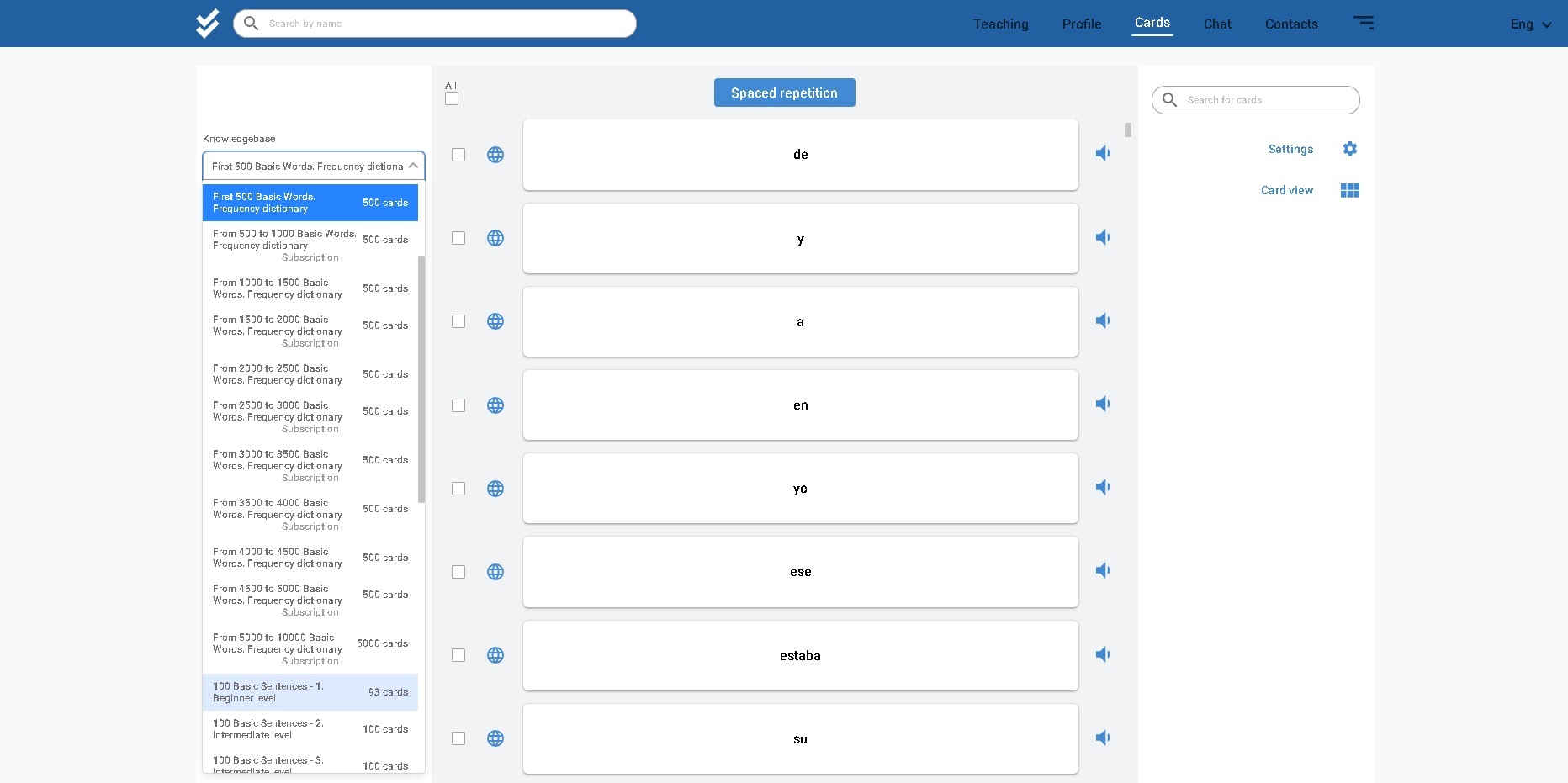Frequency dictionary is the best way to learn English or any language.
Andrei Kuzmin / 30 May
A frequency dictionary is a collection (list) of words in a particular language that are most frequently used in written or spoken language.
The dictionary can be sorted by frequency, alphabetically, by groups of words (for example, the first thousands of the most frequent words, followed by the second, etc.), by typicality (words that are frequent for most texts), etc. Frequency lists are used for language learning and teaching, creation of new dictionaries, computational linguistics applications, linguistic typology research, etc.
Frequency information has a central role to play in learning a language. Studies have shown that the 4,000–5,000 most frequent words account for up to 95 percent of a written text and the 1,000 most frequent words account for 85 percent of speech. Although results were only for English, they do provide clear evidence that, when employing frequency as a general guide for vocabulary learning, it is possible to acquire a lexicon which will serve a learner well most of the time. There are two caveats to bear in mind here. First, counting words is not as straightforward as it might seem. Second, frequency data contained in frequency dictionaries should never act as the only information source to guide a learner. Frequency information is nonetheless a very good starting point, and one which may produce rapid benefits. It therefore seems rational to prioritize learning the words that you are likely to hear and read most often. That is the philosophy behind this series of dictionaries.
“I don’t know that word.” “What does that word mean?” “How is that word used?” These are some of the most common pleas for help by language learners - and justifiably so.
Not knowing enough words, or the right words, is often the root cause of miscommunication, the inability to read and write well, and a host of related problems. This fundamental need is compounded by the fact that there are simply so many words to know in any language, but especially in English, which may contain well over half a million distinct words - and growing fast.
To fully communicate in a foreign language, you need to know about 10,000 words, so it is especially important to memorize exactly those words that are most often found in spoken and written speech. For example, there are about 50,000 words in the English language. If you study everything without a frequency dictionary, then even after memorizing any 10 thousand words, you will understand foreign speech much worse compared to the same number of memorized words in a frequency dictionary.
I also recommend memorizing whole basic sentences or sentences on topics you need. This will allow you to have ready-made structures and combinations of sentences, which, in combination with knowledge of the frequency dictionary, will allow you to quickly and without hesitation pronounce entire sentences.
Probably each of you paid attention that when speaking in a foreign language, people often make many pauses in a sentence, which leaves a clear discomfort to your interlocutor. This technique will allow you to conduct a dialogue without stammering and quickly "issue" sentence constructions.
Lingocard frequency dictionaries are compiled using special algorithms to analyze the frequency of words used in the most popular books of world literature.

We have developed mobile applications for easy storage and memorization of words. Frequency dictionaries in our applications are available for any combination of 67 foreign languages. You can get basic frequency dictionaries for free immediately after entering our application.
After downloading frequency dictionaries, you will face the main problem - memorizing a large number of new words and lack of free time. Therefore, we have developed a set of software tools and exercises for effective memorization.
We have also developed an absolutely unique audio player built into the Lingocard mobile application, with which you can memorize words and sentences at any time, for example, while driving. By making marks on the learned material, you can always listen to only new and hard-to-remember words.
Do not be surprised by the lack of pictures in our products, which are familiar to most users. The fact is that we are loading a huge amount of words and sentences into your device, and if you do this with pictures, you will need a large amount of memory. Despite this, you can independently add any picture for your difficult words and language cards. If you choose the picture for the word yourself, it will be especially effective and will definitely form additional neural connections in your brain.
Being able to swiftly translate words and sentences in both directions—foreign to native and vice versa—is incredibly valuable. To facilitate this, it is crucial to prioritize memorizing language cards starting from the native language and then progressing to the foreign one (and vice versa). In the application menu, you can easily configure the desired cards settings to support this process.
Do not forget to check previously studied material, for this you just need to mark the studied cards and will allow you to open this catalog from any mobile device to check the memorization or monitor your results.
Thus, you can create your own learning material or download your own frequency dictionaries from text files, store them for free on a cloud server and learn languages with maximum efficiency.
It is very effective to learn frequency dictionaries along with basic sentences. Memorizing sentences will form ready-made models and bundles of words in your mind, with the help of which you can conduct a dialogue without pauses between words, without thinking about the bundle of words and the correct construction of sentences.
In Lingocard applications, you can find frequency dictionaries for any foreign language and learn the most used words in colloquial speech first!